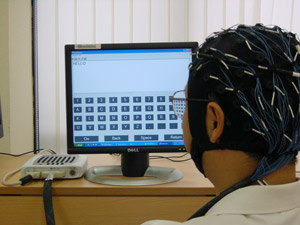
Fig. 1: A person spelling words using only brain waves via an EEG-based brain computer interface.
© 2010 Shijian Lu
Certain types of brain–computer interfaces (BCIs) could become much more convenient thanks to a new technique developed by Shijian Lu and co-workers from the Institute of Infocomm Research of A*STAR, Singapore. The researchers have devised and tested a way of using brain waves to control computers that avoids the tedious calibration demanded by conventional techniques. BCIs are of particular interest as a tool to assist the rehabilitation of people with injuries to the central nervous system.
The most commonly studied BCIs make use of standard electroencephalography (EEG), in which electrodes are placed in contact with the scalp to record the electrical activity of nerve cells firing in the brain. Users can view their ‘brain waves’ in real time and are taught to control the form of particular patterns. This conscious control can be harnessed for activities such as selecting a small area of a computer screen by focusing on it. Just like their voice or fingerprint, the encephalogram of each individual is different. Thus the machine must be calibrated to recognize each person’s wave patterns.
Lu and his co-workers made use of a particular voltage spike in the brain known as P300, which is thought to relate to a person’s reaction to an infrequent stimulus, and occurs between 0.3 and 0.6 seconds after the stimulus. A BCI can be built based on this principle but, once again, the wave form differs significantly between individuals. The researchers found, however, they could build a generic model that captured the common P300 features of a pool of individuals. Then the computer could adapt key characteristics of this model to each subsequent individual as he or she began to use the system. The longer the time spent online, the more accurate the individual models became.
The researchers tested their technique in ten subjects using software that allows words or phrases to be spelled by focusing on the appropriate letters when they appear at random on screen. This action generates the P300 pulse (Fig. 1). In less than four minutes online, the accuracy of their model was as good as that of a model generated using traditional calibration techniques.
“In the future, more adaptive algorithms will be developed to provide BCI with a learning capability, so that it can perform well in various conditions for all subjects,” Lu says.
The A*STAR-affiliated authors in this highlight are from the Institute of Infocomm Research.



